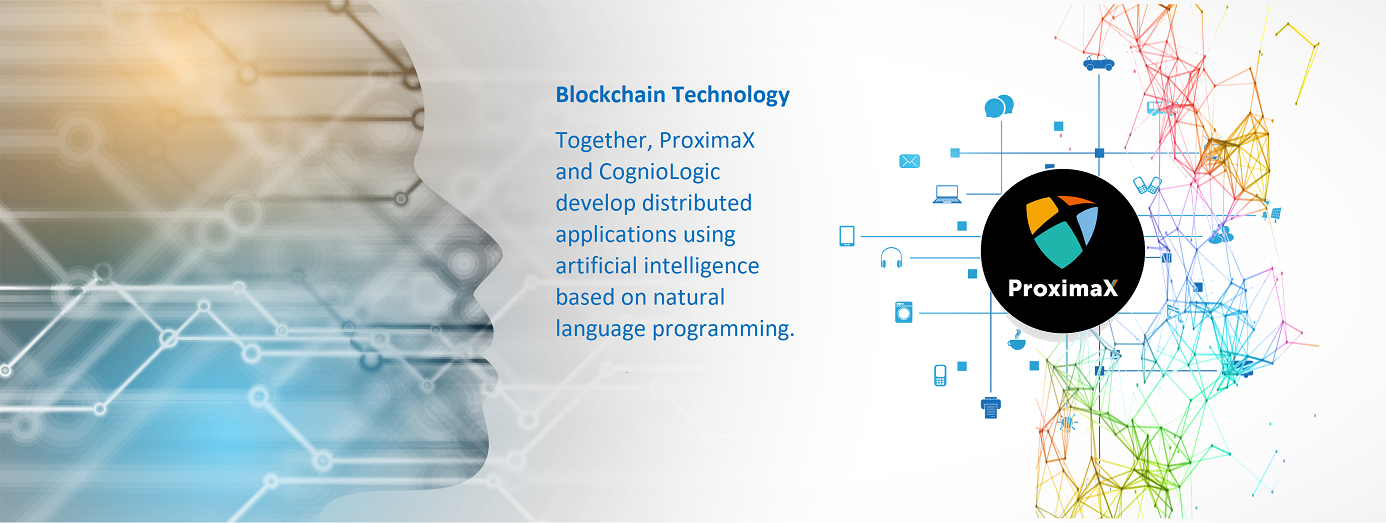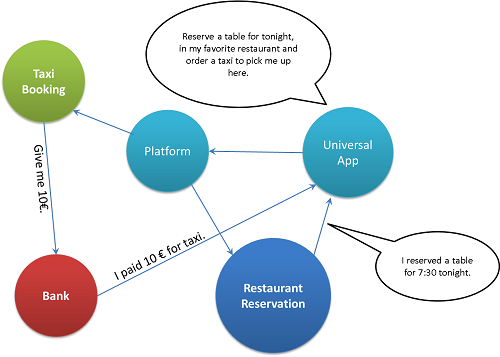
Distributed Natural Language Application
Natural language programming is a new paradigm in software development. It enables non- IT people, but experts in their fields to program complex applications. The source code of an application is a precise description of the facts in natural language. With this new paradigm, for example, two parties can easily articulate the conditions of a contract in natural language, thereby creating the source code for the smart contract.
User interface will significantly change with programming in natural language. In addition to the GUI (graphical user interface), our technology offers a natural-language interface in apps, allowing users to TALK to the applications.
Blockchain
AI will aid us in many areas of our lives. However, it could be abused or infected with malware - viruses, worms, Trojans & co. Malware has a negative effect on our data and in the future could cause devastating consequences (ex. control of our vehicles).
By programming in natural language, the source code of an application can be easily understood and checked for malicious software by anyone. Through natural language programming, the advantages of a blockchain application (transparency, protection from falsification and execution in a secure and distributed network) are enhanced.
The evolution of artificial intelligence is, therefore comprehensible and controllable by us. The transparence and accessibility reached by using blockchains with natural language programming (nlp), enables the participants of blockchain to evaluate the applications of AI. This diminishes the concerns and fears often addressed in the media.

Information gathered in applications written in natural language (NL-Apps), is saved, just like humans, in short and long-term memory. The short-term memory is constantly evaluated and usually discarded after a relatively short time, thus not transferred into blockchain. Only information that meets certain criteria will be stored in long-term memory. Long-term memory is divided into public and private. The long-term private memory is stored outside the blockchain.

The long-term public memory in the blockchain will be available as a common knowledge base for all NL-Apps. Short- and long-term memory play an essential role in contextual behavior.
Browser or universal app
Unlike browsers, the NL-Apps are not accessed by entering the internet address. With a universal app, multiple NL-Apps can be accessed and set in motion. For instance, a user wishes to go out to dinner at their favorite restaurant and get there via a taxi service. Normally, the user has to go to the website of the restaurant to get the number and then call them to make a reservation. After that the user, then accesses the taxi app on their phone or finds the number of a taxi company to then order a taxi and give them the address of where the user wishes to be picked up. With the smart universal app, the user speaks to the app or writes the following:

The universal app converts the acoustic signals into text, sending it then to our platform. The platform analyzes the text and carries out the multiple tasks the user asked it to complete, in the one sentence
Protocol
Our protocol is very simple. The apps exchange information with one another, by communicating with each other in natural language.

ProximaX Platform
ProximaX is an advanced extension of the Blockchain and Distributed Ledger Technology (DLT) with utility-rich services and protocols. Businesses, enterprises, and innovators can avoid costly and failure prone centralized architecture by utilizing an all-in-one sustainable platform which provides augmented secured services, content delivery, storage, and media streaming.
Read more about ProximaX.